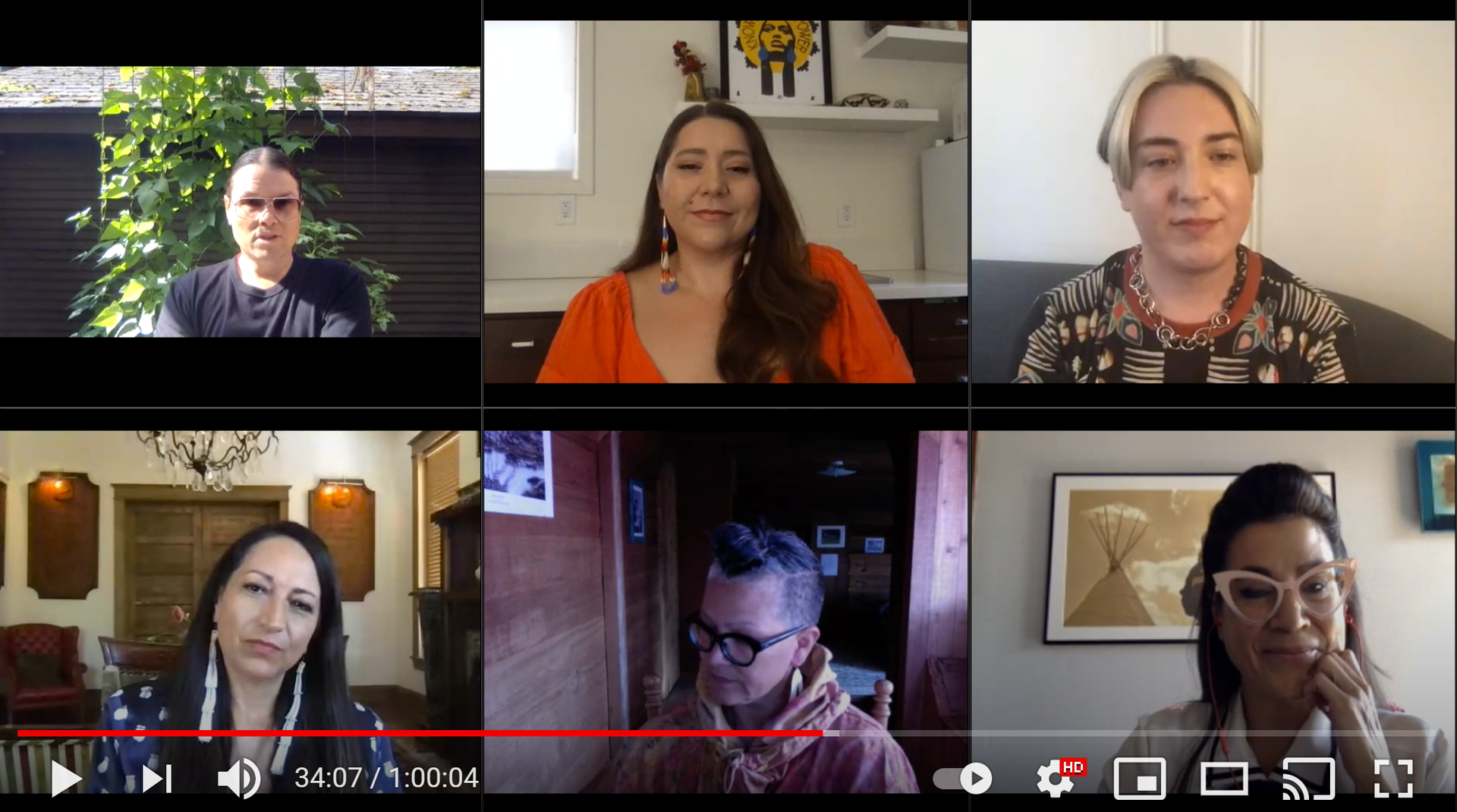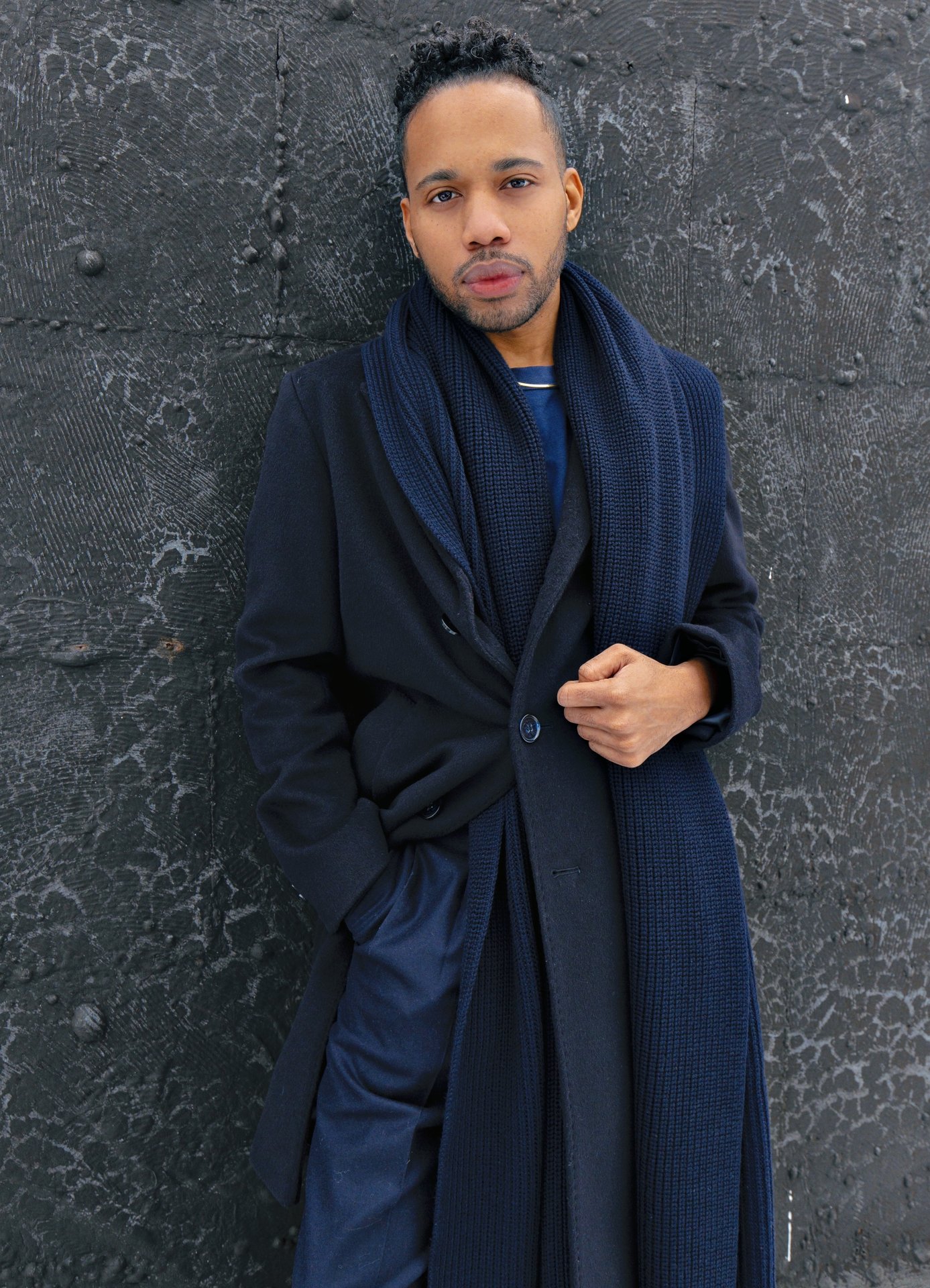Noma New York Unveils Peace Noir Collection
February 9, 2021
Nicky Campbell
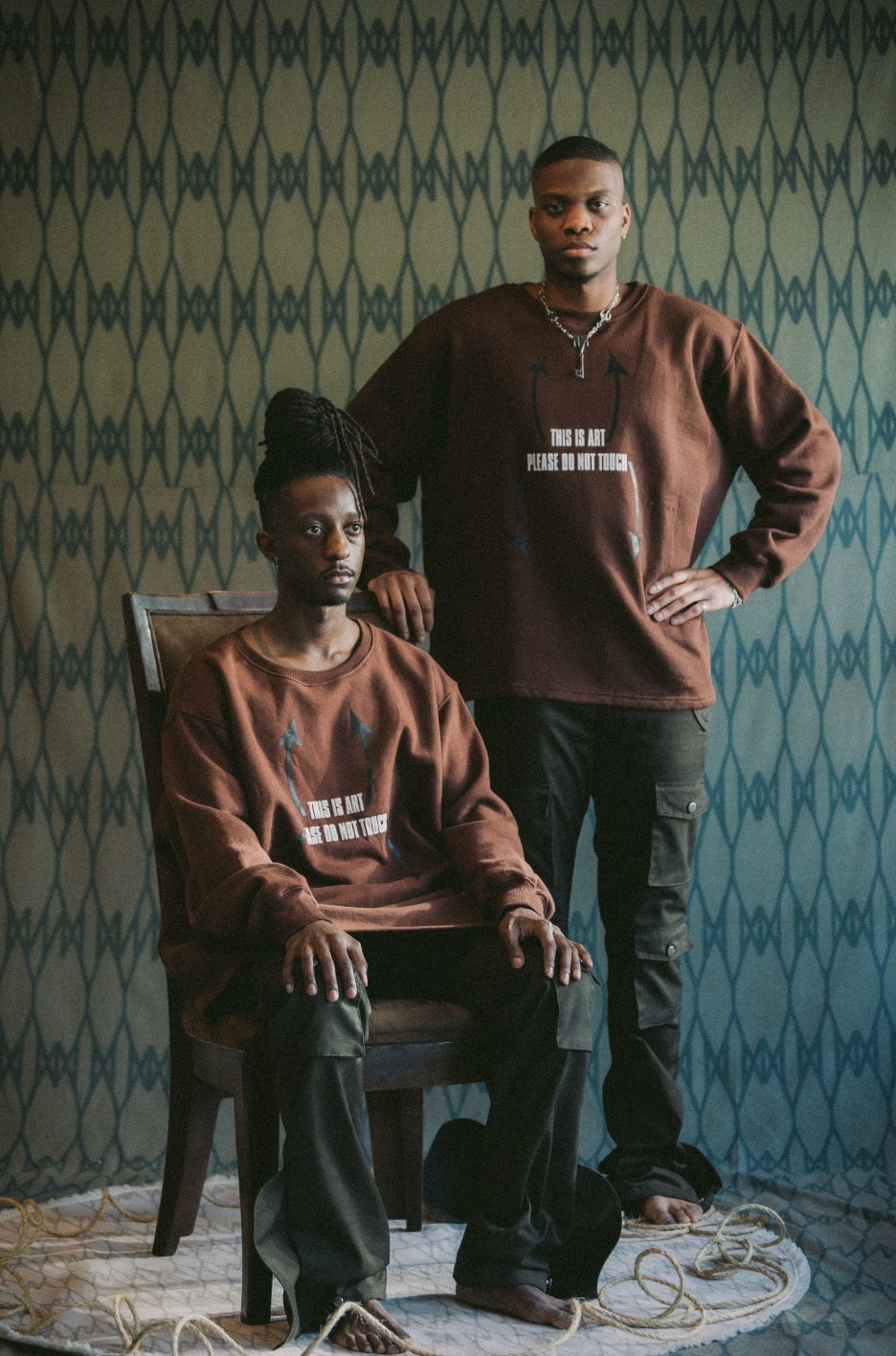

There’s a new emerging luxury brand that kicked off Black History Month with a bang. With the Peace Noir III Collection, Nomä New York debuted a compelling line of wearable wardrobe staples with a strong message.
Founded in 2014 by Amon Ogyiri, the New York native cultivated a love of fashion at an early age. Inspired by his family and his cousin who had a particular penchant for Ralph Lauren – an idol of Ogyiri’s – the designer is now finding his stride and working to build his own fashion legacy. The recent collection Peace Noir, which translates to “Black Peace,” envelopes the hardships of Black people across the diaspora. The collection is designed with those who came before him, and honors the past while celebrating the black community. The collection will also be accompanied by Ogyiri’s second solo art installation at his project-based studio in the Lower East Side, and a coat drive through the brand’s Pay It Forward Initiative, where he will be accepting gently worn coats to donate to the less fortunate during the frigid winter days in New York.
Learn more about the rising talent below.
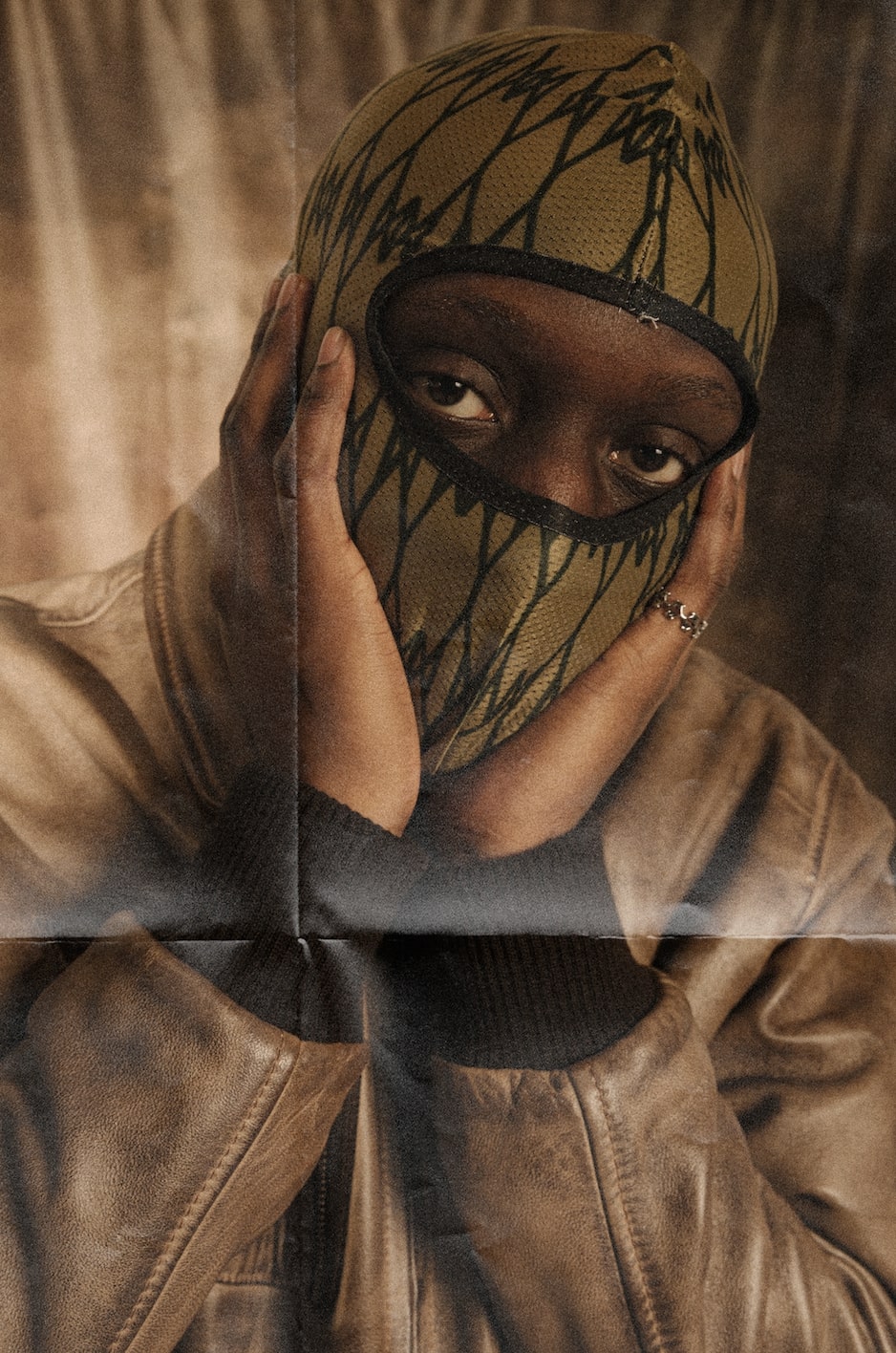
Nomä New York
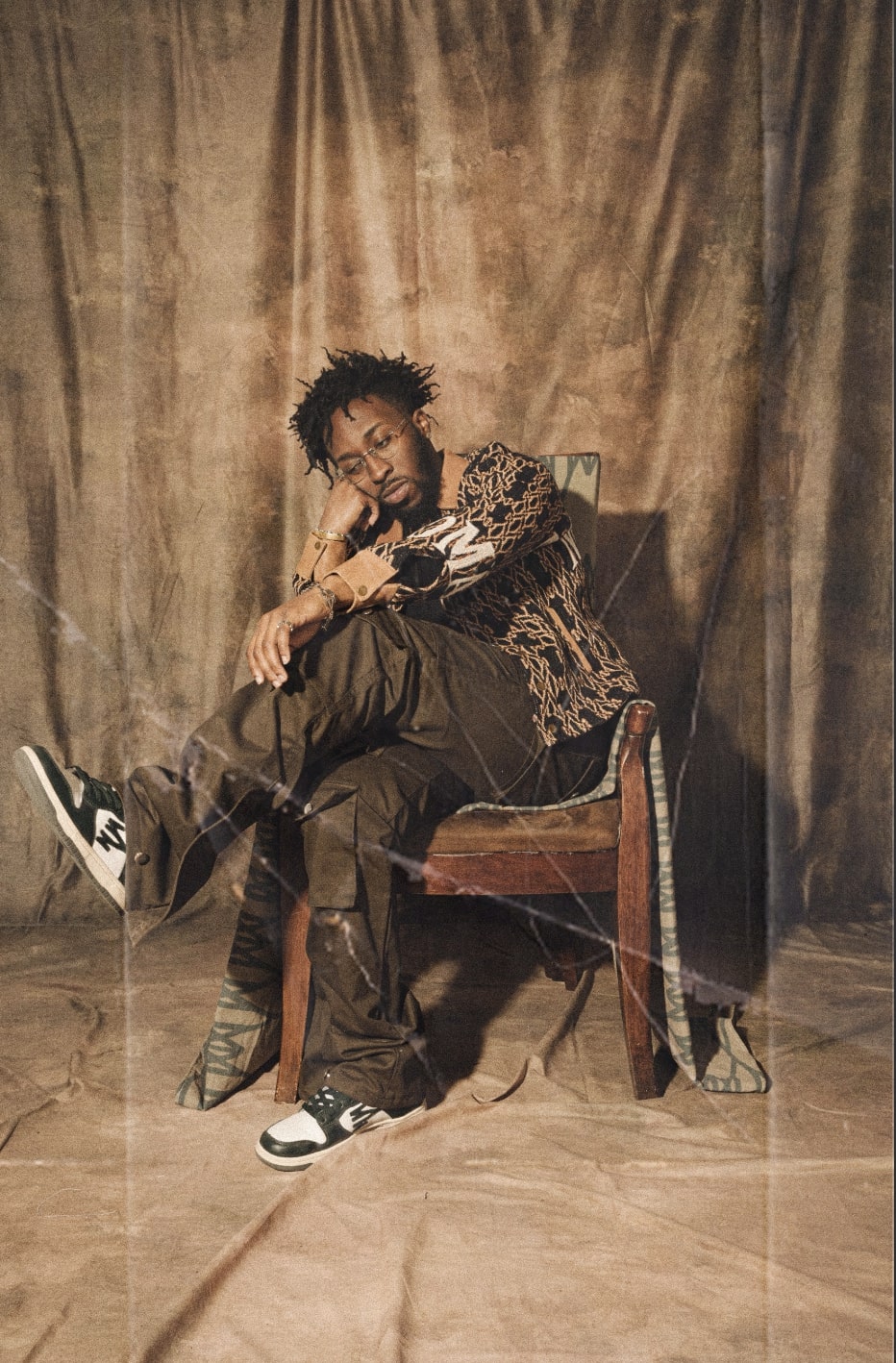
Nomä New York

Nomä New York
Tell us about yourself. How did you get into fashion?
Amon Ogyiri, born in the Bronx, NY to parents who immigrated from Ghana. In retrospect, my parents worked extremely hard to give me a life they could not have. I attribute my affinity for fashion to my father and cousin as well as attending Catholic school for the majority of my academic education, in which I was required to wear a uniform. I didn’t allow this to limit my ability to form a sense of style. My father treated me with occasional shopping sprees which resulted in my adolescent wardrobe consisting of Ralph Lauren, Tommy Hilfiger, Nautica, Izod, etc. The rare occasions in which I was able to express my sense of style were on “Dress Down Days” at school. A day where we were given the opportunity to pay $1 to dress down in our own clothes and not in uniform. Weekends I spent with my cousin who was a vintage Ralph Lauren collector spending our time scouring eBay, bidding on vintage Ralph Lauren finds. It was during these times that I discovered my sense of style and began exploring my love for fashion.
My early sense of fashion came from a preppy, clean-cut outlook on fashion, stemming from constantly wearing a uniform during the week and attending church services on Sundays. From an early age, Ralph Lauren advertisements piqued my interest; his versatile marketing approach catering to all demographics was and still is remarkable to this day. As a teen, seeing the clean-cut representation of African American kids in Polo & Rugby garments heavily grasped my attention and had me practically begging my parents to purchase me more. The versatility of Ralph Lauren’s brand laid the foundation in my mind for creating a company with a similar ethos and business model. When reading more about Ralph Lauren’s experience, I learned that he was also born and raised in the Bronx and attended Dewitt Clinton High School which is actually in the neighborhood I grew up in. Finding out that someone as successful as Ralph Lauren attended school within proximity and rose to such heights put the “battery in my back” that it is also possible for me to attain such success.
What is your design philosophy?
My design philosophy stems from purpose. I developed my design philosophy in my 11th grade English Literature class because my teacher placed a major emphasis on self-discovery and purpose. He was very adamant about the need for purpose and constantly asked the question “Why?” to understand the meaning behind what we wrote about and how we determined the answers in our assignments. The purpose is a requirement that has to be “checked off” during my design process. This helps me relay my intentions to the viewer.
Expressing “art through fabric” has been my mantra when formulating each collection This is shown in the first capsule collection I released in 2014, titled the “Lost” collection. This collection consisted of 3 pieces, a short sleeve, a long sleeve, and a pair of shorts. The collection depicted my thought process of knowing where I wanted to be in life, understanding and acknowledging where I currently was, and how I planned to navigate my way into a better position. The long sleeve I released had two 3M reflective trimmings stitched around the arms by the cuffs. The word “Depayse” was screen-printed across the front in a scattered motion. Dépaysé is a French word, simply defined as one who is out of their element. The design of the shirt stemmed from frequent conversations between my peers and myself, regarding the topic of growth and witnessing people in our age group “move up” in life, while our lives appeared stagnant. We all knew we were not where we wanted to be in our lives whether it be socially, financially, spiritually, or academically. Although I was “lost” at the time, It was only a matter of time until I found myself.
What inspired you to launch your brand?
I have always had an entrepreneurial quality to myself. Creating and selling chains and bracelets with Perler beads or trinkets, sewing DIY items, buying and selling mostly coveted items with resale value. Retro Jordans, Supreme, Bape, and G-shocks were pretty hot at the time. This was around 2009-2013. After an unfortunate scamming encounter, I decided to focus on creating my company. My love for clothing inspired me to launch my brand, I grew closer to high fashion avant-garde brands through attending Fashion’s Night Out before its end in 2013. Delving into brands like Maison Martin Margiela, Helmut Lang, Rick Owens, Bernhard Wilhelm, Prada, YSL, Christian Dior, plus more. Between the ages of 14-16, I was saving all my money to purchase certain items that would break my bank at that time. After a while of purchasing pieces at certain price points, one day I realized that if I can pay this amount for garments, footwear, and accessories, I can invest that into creating my own craft. This will place me in a position to not only do what I love but also utilize my entrepreneurial spirit to become my own boss. I began to sketch my designs in a sketchbook during my freshman and sophomore years of high school. My outlook on fashion was of a high fashion caliber; however being from the Bronx, the demographic in front of me were people who did not align with avant-garde but rather what has become known as “streetwear”. Therefore, I had to find a balance where I was able to accommodate my peers and stay true to the ethos I wanted my brand to illustrate. Thinking back, I was kind of scared to embark on this journey alone. Before Nomä New York, there was “Segregated Democracy.” A brand that I egged one of my closest friends to start with me our sophomore year of high school. Me being Black and my friend being white, the brand highlighted the ability of individuals from two different ethnic backgrounds to come together in unison to work together. I took on most of the work; mostly menial, creating the logo and creating a few t-shirt mockups mostly because he wasn’t really into fashion. He just really wanted to be a good friend and support my dreams. Eventually, it didn’t work out but we are still friends to this day, we laugh about it from time to time. Finally my junior year, I worked on the Lost Collection, received my samples, set up a photoshoot by a lake in my neighborhood, edited the photos, and released my first Noma t-shirt during the summer, June 22, 2014, to be exact.
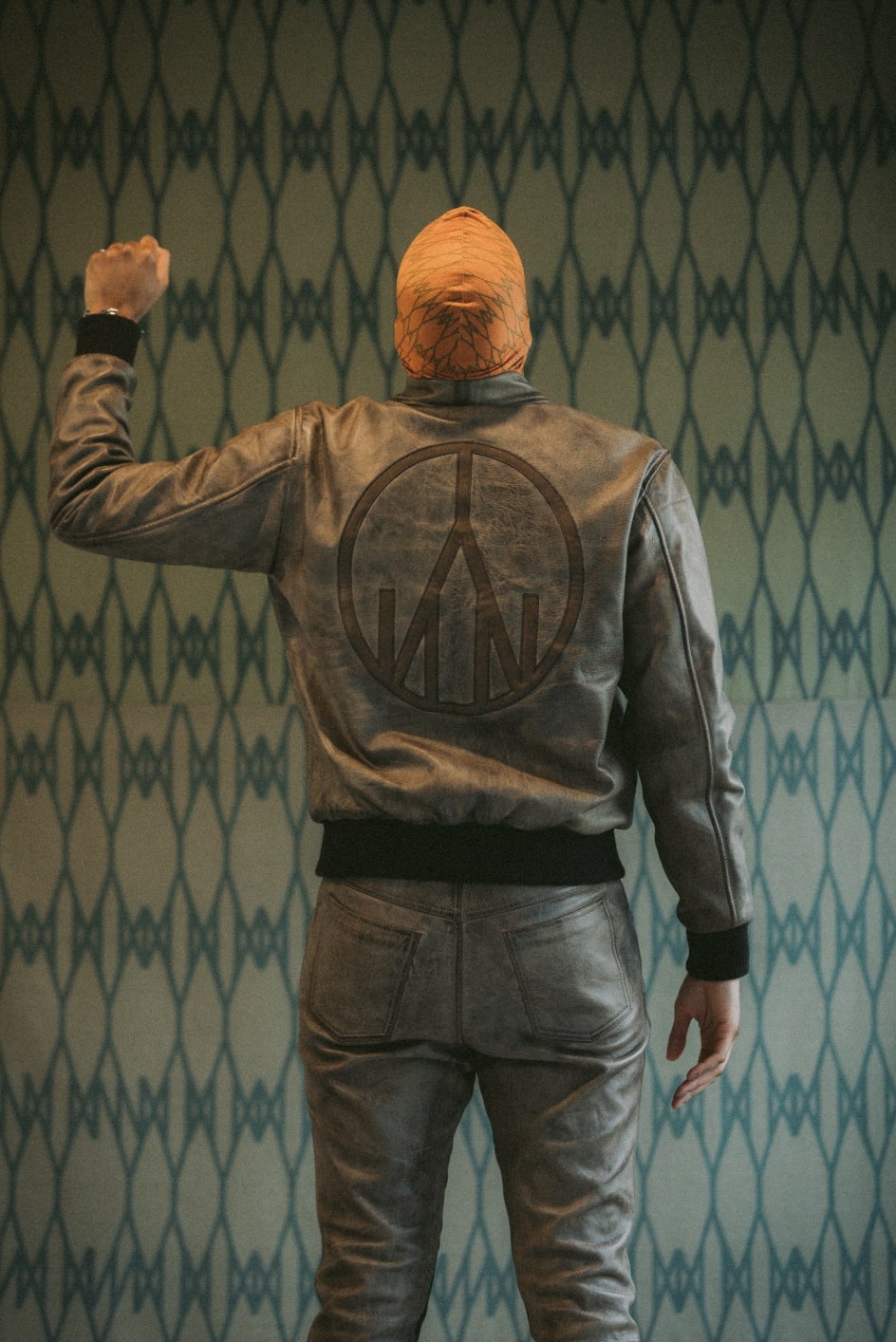

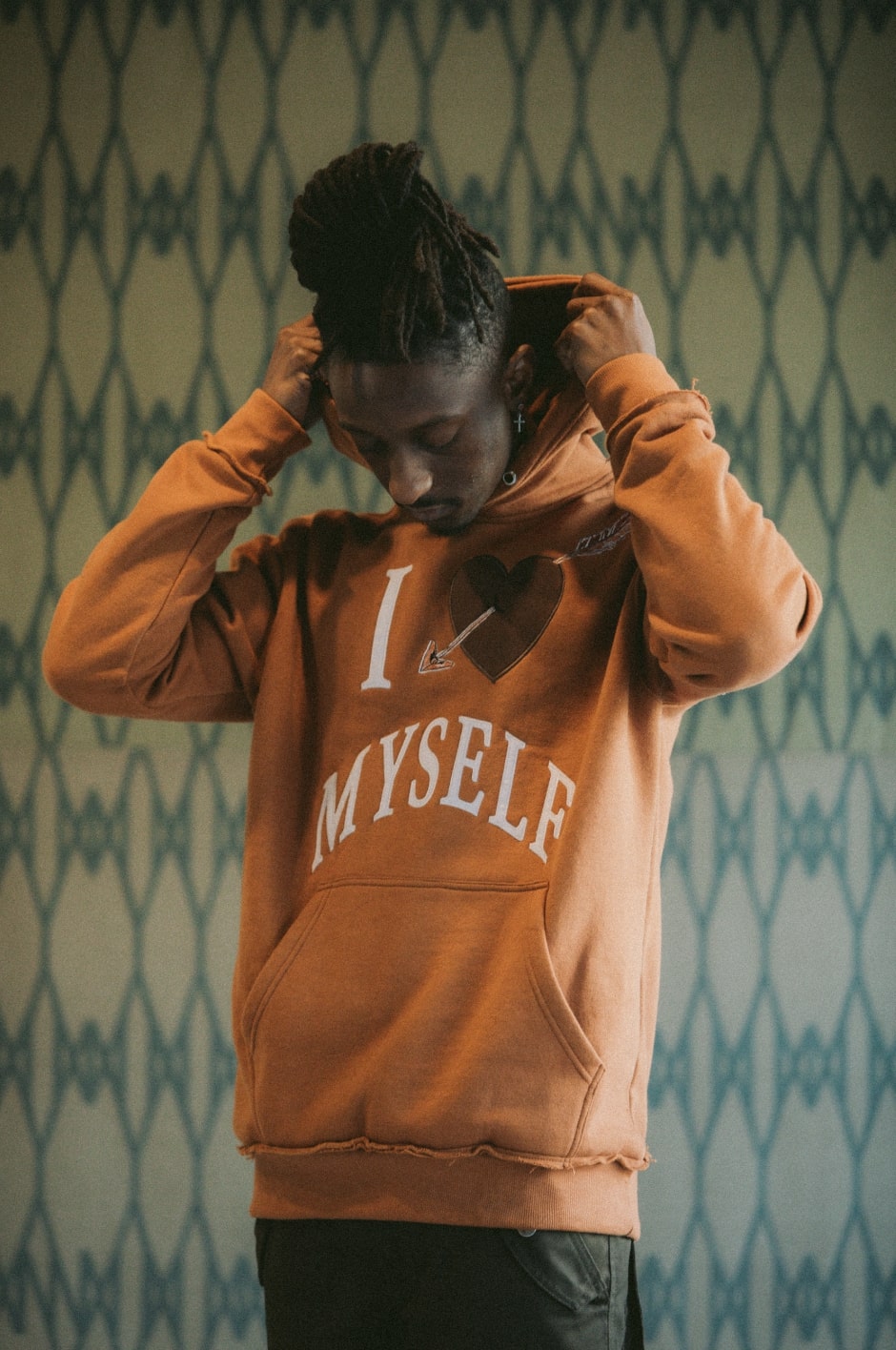

Nomä New York
Nomä New York
Nomä New York
Nomä New York
Where do you get your inspiration from?
I get my inspiration from life. Conversations with friends, family, strangers. My relationships, successes, pitfalls, current events, obstacles, and daily encounters. I analyze and dissect it down to what it means to me. I then regurgitate that into the pieces I make. Every garment encompasses an artistic connotation. The intent to illustrate substance is shown through the fabrics, colors, design, stitching, and mediums utilized in the production and construction of the piece. Every collection comes from a personal point of view. How I feel about things going on in my life and experiences I have encountered in my lifetime. Nostalgia plays a major role in my design process as well. I have implemented a permanent collection named “Nostalgic Objective Minimal Aesthetic” This acronym spells out “NOMA” which defines the brand’s identity. Nostalgia is the objective of the brand and Minimalism is the aesthetic, which stands the test of time. I am of the view that less is more and has more value in the long run. I create with the future in mind. Can I wear this next year or the year after? Will this piece mesh well with pieces I have created or will create? Will I be able to pass these items onto my children or grandchildren?
Where did your creative process begin this season, and why was the Peace Noir collection important to release now?
My creative process for this season began at the dawn of 2020 while I was in Europe. Traveling in January – initially to Rome with two friends for a few days then onto Paris for a solo trip – had my mind racing on this two-lane highway trying to figure out where I wanted to be in life and where I was heading. It was the start of a new decade, I was a year fresh out of college and I had just landed myself in a non-paid internship as a Systems Analyst at a hospital in Manhattan. One thing for sure and two things for certain are that I did not know what my next step was and I was quite accurate that I did not want to be there. Looking back, I was battling a lot at the time, almost distorting my ability to see if pursuing a retail company was even worth it anymore. My initial intent was to release Peace Noir III in 2020 but between my internship and the onset of COVID-19, I was forced to pivot because I would not have been able to depict Peace Noir to its fullest extent. The uncertainty of the times, lockdowns, and closures around the world forcing everyone into their homes were all pressing factors. During the lockdown, we experienced the gruesome murder of George Floyd which created shockwaves throughout the world. This particular murder caught on tape forced everyone to understand the severity of racial injustices still prevalent in our society today. Amidst a pandemic, millions of individuals around the world took to the streets to protest and stand in solidarity against racism.
Peace Noir, which translates as “Black Peace,” is a capsule collection I started in 2017 dedicated to the brave souls before us who fought for my freedom. Had it not been for their courage, I would not be granted the opportunities I have today. As the year dredged on, I continued to see multiple cases of racial inequality plastered all over the news. My thought process was filled with this issue at hand. An issue which has been here before I was even born, yet continues till this day. The importance of this collection release is vital to my purpose first as a Black Man and second as an artist. My generation has taken this “baton of inequality” and now it is our turn to continue running this race. Raising awareness in our own respective ways against the injustices against us due to the color of our skin. My vehicle of raising awareness is through my art and clothing.
How will you be celebrating Black History Month this year?
This Black History Month, I am exhibiting my second solo art installation titled “Peace Noir III: Marathon For Equality” at my project-based studio in the Lower East Side. The installation is inspired by the 1968 USA Olympics where Tommie Smith and John Carlos demonstrated a nonviolent protest against racism. Tommie Smith and John Carlos raised their fists in the air during the USA anthem of their award ceremony to protest against racial inequality in sports and the disenfranchisement of all African Americans as a whole. I decided to hold a panel with a few Black creatives at the studio discussing the meaning of being a young Black creative during a pivotal time in our lives. Alongside this, we will be enacting a coat drive through our Pay It Forward Initiative where we will be accepting gently worn coats to donate to the less fortunate during the frigid winter days in New York.
What is your message for other aspiring black creatives in the industry?
I used to think I was a perfectionist. Truth be told, there is no such thing as perfection in my opinion. Perfection is subjective. Be open to constructive criticism but as long as you are satisfied with your work, that is truly what matters. If there is anything you are truly passionate about doing, go for it. Aspiring Black creatives have so much to offer to the world. When I look around, I see our culture shifting and pioneering the majority of the trends that we see go viral. I’m always excited to see how much more impact we can bring.
